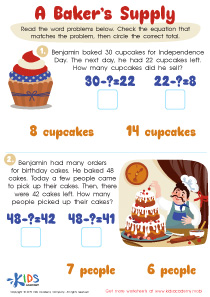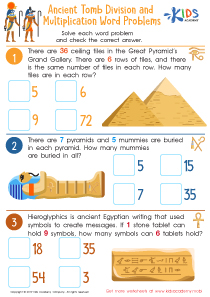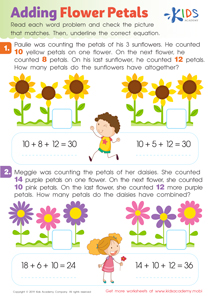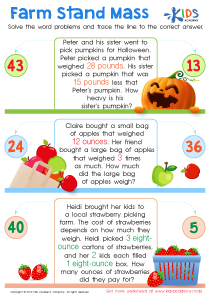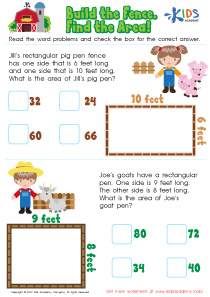Graph Word Problems Worksheets for Ages 7-8
2 filtered results
-
From - To
Introduce your young learners to the fun world of graph interpretation with our Graph Word Problems worksheets, specifically designed for children aged 7-8 years. These educational worksheets are expertly crafted to enhance early mathematical skills through engaging and age-appropriate challenges. Each worksheet encourages critical thinking and problem-solving as children learn to analyze and draw conclusions from various graphical data. Perfect for home or classroom use, our worksheets provide a solid foundation in understanding basic graph concepts and applying them in real-world contexts. Get your kids excited about math with this essential learning tool!


Coffeehouse Survey: Picture Graph Word Problems Worksheet
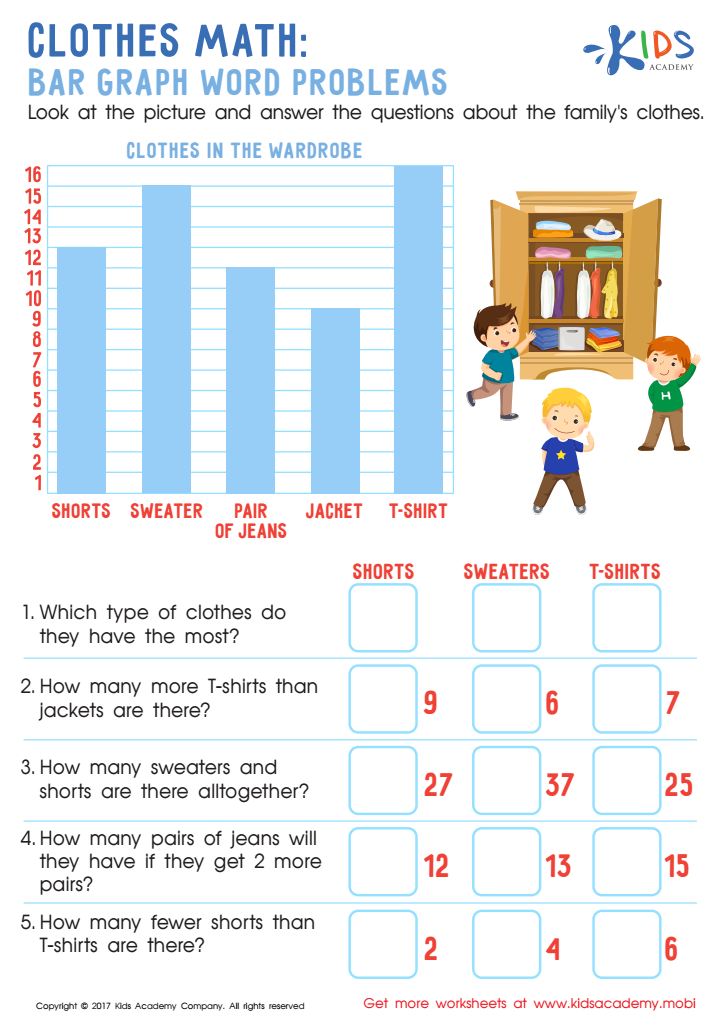

Clothes Math: Bar Graph Word Problems Worksheet
The Value of Educational Printables: Graph Word Problems for Children Aged 7-8
In the world of elementary education, engaging young minds in the realms of mathematics and literacy is crucial. For children aged 7-8, mastering new skills and concepts sets a strong foundation for future academic success. Among the various tools at the disposal of educators and parents, educational printables, specifically worksheets focusing on graph word problems, play a pivotal role. These resources blend learning and fun, making them an excellent choice for teaching important skills.
1. Building Essential Math Skills
Graph word problems worksheets are not just about learning to count or recognize numbers. They delve deeper into the vital area of data interpretation and analysis—a skill set increasingly important in our data-driven world. By working through graph word problems, children learn how to read bar graphs, pie charts, and line plots, which are representations of numerical data. These worksheets teach children how to extract and process information presented in graphical form, a skill that forms the basis of more complex mathematical concepts like statistics and probability in later years.
2. Enhancing Reading Comprehension
Word problems are not purely mathematical challenges; they require a good grasp of language to understand and solve. This dual demand helps to sharpen a child’s reading comprehension. As children decode the text in graph word problems, they must identify the key pieces of information relevant to solving the question. This practice enhances their ability to sift through details, a skill beneficial across all subjects, particularly in language arts.
3. Developing Critical Thinking and Problem-Solving Skills
Graph word problems encourage children to use their critical thinking skills. They must decide what information is necessary and what mathematical operations to apply to arrive at a solution. This decision-making process boosts their problem-solving skills, teaching them to analyze situations and think logically. Educational printables that encourage these skills through age-appropriate content can inspire confidence and a love for tackling challenging questions.
4. Encouraging Real-World Application
One of the great advantages of graph word problems is their ability to relate mathematics to real-world scenarios. Children might encounter problems involving scenarios like tracking the number of apples picked at an orchard each month or comparing the amount of rainfall in different seasons. Such contexts help children see the relevance of what they are learning to everyday life, enhancing their interest and engagement.
5. Supporting Independent Learning
Educational printables are designed to be clear and self-explanatory, allowing children to work on them with minimal supervision. This fosters independence in young learners, as they take initiative and attempt to solve problems on their own. Worksheets on graph word problems are particularly beneficial as they often include step-by-step instructions and examples that guide children through the process of solving each problem. This structure helps children learn at their own pace, revisit concepts as needed, and develop self-reliance in their learning process.
6. Facilitating Assessment and Feedback
For teachers and parents, educational printables provide a straightforward means to assess a child's understanding and skills. As children complete worksheets on graph word problems, their responses give immediate insight into their grasp of the material. This allows adults to provide targeted feedback, helping to reinforce concepts or address areas of difficulty. Regular practice and timely feedback are critical for solidifying learning and ensuring children feel supported as they navigate new challenges.
7. Adaptable and Diverse Learning Tools
Worksheets on graph word problems are highly adaptable and can cater to various learning styles. Whether a child is a visual learner who benefits from colorful charts and graphs, or a more text-oriented learner who enjoys detailed descriptions and scenarios, educational printables can be designed to meet these diverse needs. Additionally, they can be used in a variety of settings—classrooms, homeschool environments, or even during travel—making them incredibly versatile.
8. Promoting Collaborative Learning
Although educational printables can be used for individual learning, they also provide opportunities for collaboration. Children can work together on graph word problems, discussing their ideas and strategies before arriving at a solution. This collaboration fosters communication skills, encourages the exchange of ideas, and can make learning a more enjoyable and social experience.
Conclusion
Worksheets on graph word problems are more than just simple educational tools; they are gateways to essential life skills for children aged 7-8. Through these educational printables, children not only enhance their mathematical and literacy skills but also develop critical thinking, problem-solving abilities, and a greater appreciation for the application of knowledge in real-world settings. As children engage with these worksheets, they build confidence and independence in their academic abilities, laying a solid foundation for all future learning endeavors.
 Assign to the classroom
Assign to the classroom
